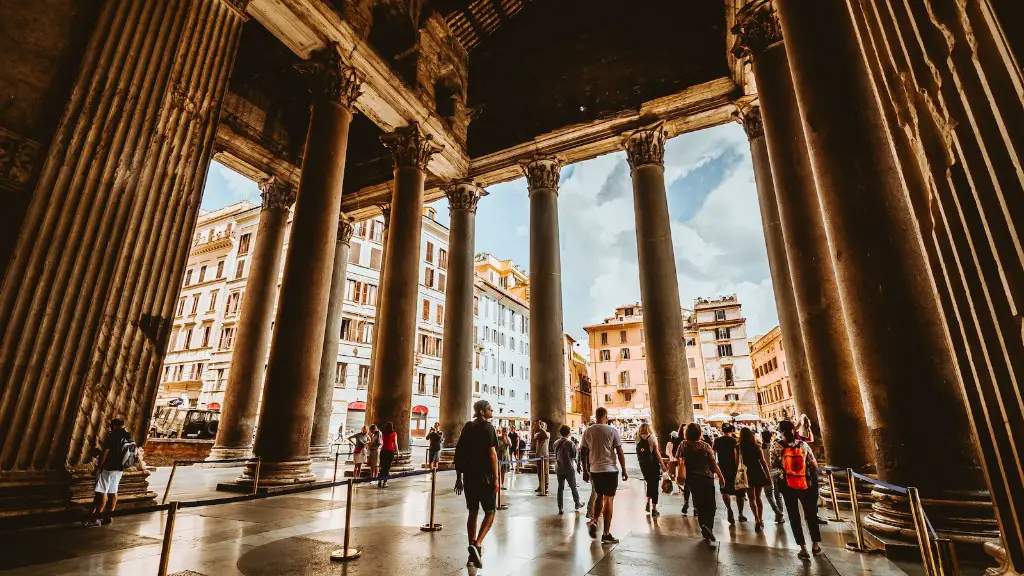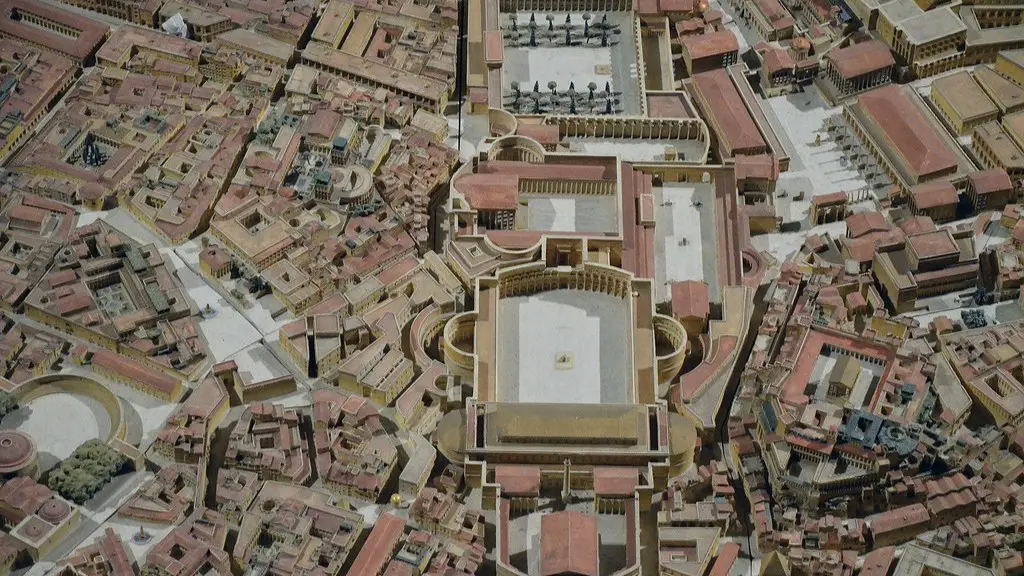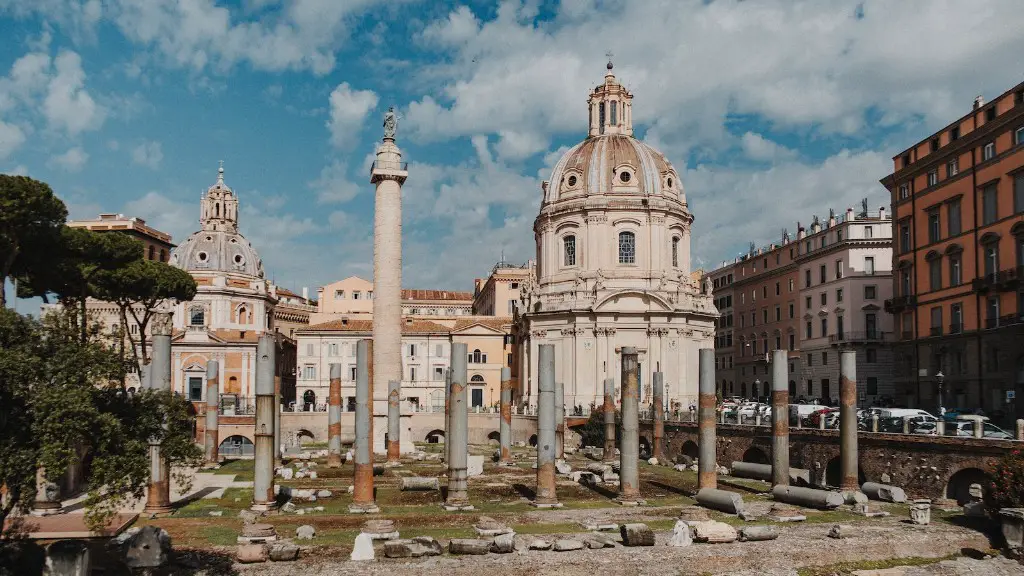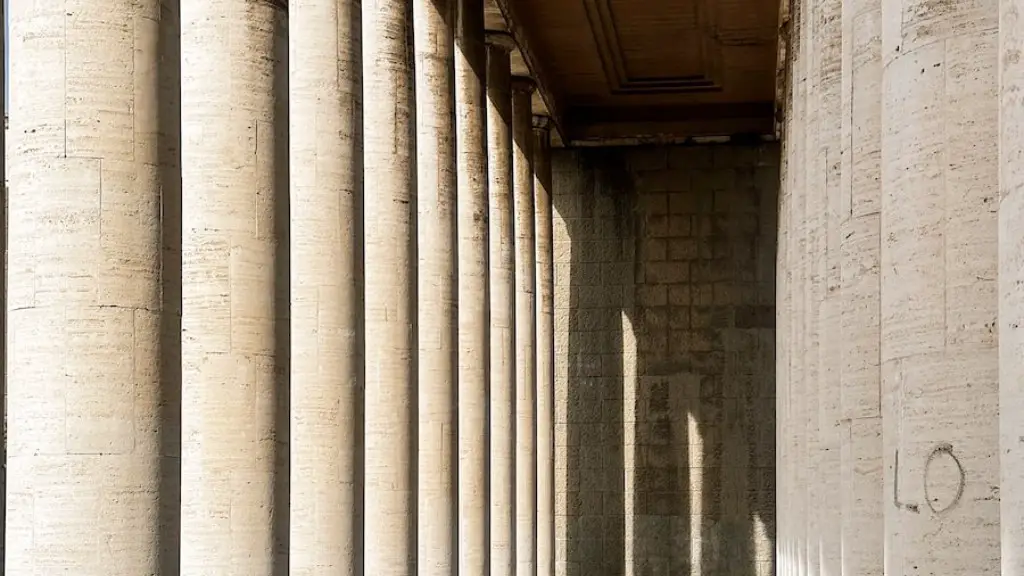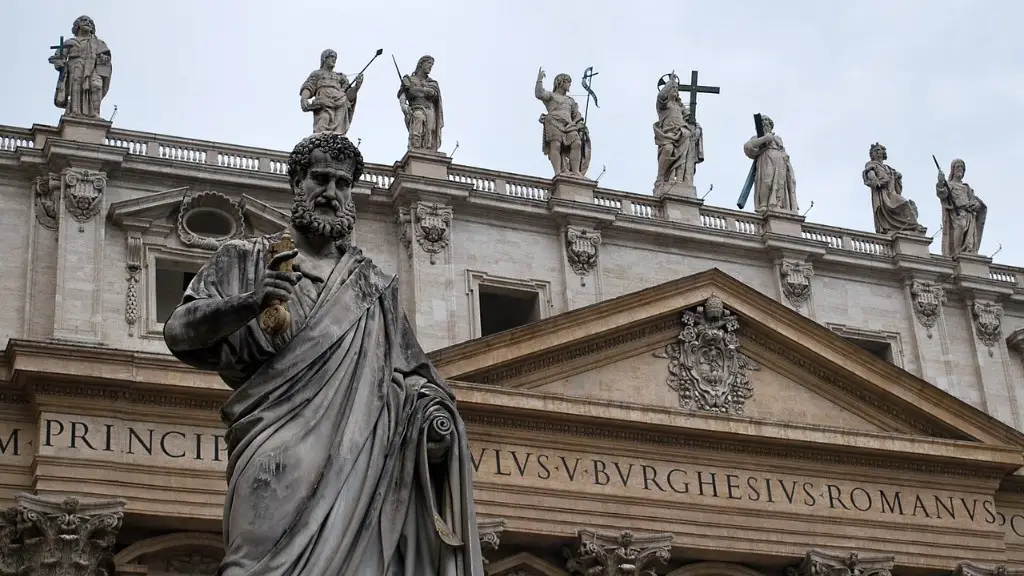Rome is a city in central Italy on the Tiber River. Rome is the capital of Italy and also the Lazio region. With 2.8 million residents in 1,285 square kilometers (496 square miles), it is also the country’s most populated comune. It is the fourth most populous city in the European Union by population within city limits. The Metropolitan City of Rome has a population of 4.3 million residents. The city is located in the central-western portion of the Italian Peninsula, within Lazio (Latium), along the shores of the Tiber. The Vatican City is an independent country inside the city boundaries of Rome, the only existing example of a country within a city: for this reason Rome has been often defined as capital of two states.
Some of the things that Ancient Rome is famous for include the Roman Republic, the Roman Empire, the Roman Forum, the Roman Colosseum, and Roman roads.
What is the most famous thing in ancient Rome?
The Colosseum is a must-see for anyone visiting Rome. It is one of the most iconic and well-preserved ancient ruins in the world. The Colosseum was built over 2,000 years ago and was once the site of famous gladiator contests. Today, the Colosseum is a popular tourist destination and provides a fascinating glimpse into the past.
The Roman civilization has left a significant mark on our world today. Here are thirteen things that the Romans did for us:
1. Fast food – The Romans were the first to introduce street stalls and “food on the move” as we might think of it today.
2. Advertising and trademarks – The Roman system of advertising and trademark registration was very sophisticated and served as the model for our modern system.
3. Plumbing and sanitation – The Romans were the first to develop indoor plumbing and sewer systems. This had a major impact on public health and helped to prevent the spread of disease.
4. Towns – The Romans were the first to develop the concept of the city as a planned and organized unit. This helped to promote trade and commerce, and also allowed for the development of public infrastructure such as roads and buildings.
5. Architecture – The Romans were known for their innovative and beautiful architecture. Many of their buildings, such as the Colosseum and the Pantheon, are still standing today and continue to inspire architects.
6. Roads – The Romans built an extensive system of roads that connected their empire. This not only made trade and travel easier, but also allowed for the quick movement of troops and supplies
What are 5 interesting facts about ancient Rome
The Roman civilization was one of the most influential in human history. Here are ten facts about the Romans that may surprise you!
1. The Romans would have baths together.
2. The Romans invented loads of things!
3. The Roman’s most popular form of entertainment were Gladiator fights.
4. The rich Romans had servants.
5. We still use some Roman roads.
6. They worshipped a lot of different Gods and Goddesses.
7. Ancient Rome is underground.
There are many things that we use in our everyday lives that were invented by the Ancient Romans! Here are just a few examples:
-Roads: The old proverb “all roads lead to Rome” (usually interpreted as “many paths may lead one to the same goal”) stems from the fact that originally they sort of did, or rather they came from Rome!
-Central heating: The first ever recorded instance of central heating was in the Roman baths.
-Concrete: The Roman Empire was responsible for the widespread use of concrete as a building material.
-The calendar: The calendar that we use today is actually based on the Roman calendar.
-Flushing toilets and sewers: The Ancient Romans were the first to create a system of flushing toilets and sewers.
What is Rome’s greatest achievement?
The most obvious achievement of the Romans was their vast empire, which spread over three continents. It lasted for a long, long time, from 625 BC to AD 476. If one includes the eastern Roman empire, which lasted until AD 1453, it would even be 2078 years!
There are a lot of interesting facts about the founding of Rome! For example, did you know that Romulus and Remus, the founders of Rome, were supposed to have been raised by a wolf? And that cobwebs were used to stop bleeding? Gladiators and chariot racers had fans just like modern footballers! Julius Caeser even hated going bald so much that he made it illegal for anyone to stand above him and look down.
What did ancient Rome invent?
The military medical corps established by the Romans was one of the first dedicated units of field surgery. This corps was responsible for many surgical tools and innovations, including the cesarean section. The Romans were also responsible for pioneering the use of hospitals in the battlefield.
Ancient Rome was a major political and cultural force in the Western world. The city of Rome was founded in 753 BC, and the Roman Republic was established in 509 BC. The Roman Empire was founded in 27 BC, and it reached its height under Emperor Constantine in the 4th century AD. The Roman Empire fell in the 5th century AD, but the legacy of Rome has continued to influence the Western world.
Why is Rome so special
Rome is a city like no other. From its ancient history to its beautiful landmarks, there’s so much to love about the eternal city. Rome is a must-visit for anyone who loves history, art, or simply wants to experience a city like no other.
The Roman Empire was very advanced for its time, especially in terms of architecture. They built many different types of buildings, all of which showed their abilities in construction. The most famous of these is the Forum Romanum, or Roman Forum. This was a large open area used for public meetings and other events. It featured many different types of columns, as well as new designs. Another famous building is the Colosseum, which is a large amphitheater. This was used for entertainment and public events. The Roman Empire also built many aqueducts, which were used to transport water to different parts of the city.
Why is Rome called the Eternal City?
The ancient Romans believed that Rome was the Eternal City because it would never fall or be destroyed. Even though empires have risen and fallen since then, Rome is still standing strong. This is why it’s called the Eternal City.
It’s hard to believe that only a few months ago, our lives were so different. We never would have guessed that in such a short time, we would be dealing with a global pandemic. But here we are.
We’ve all had to make major adjustments in our lives, both at work and at home. And while it’s been a challenge, there have been some silver linings.
For example, many of us have had more time to spend with our families and to focus on our personal wellbeing. We’ve also been forced to slow down and appreciate the simpler things in life.
Looking back, there are some things that we took for granted before COVID-19 that we now realize are actually quite valuable. Things like being able to gather with friends and family, to travel freely, and to enjoy outings without having to worry about our health.
We hope that as we move forward, we can hold onto the lessons we’ve learned during this difficult time. And that we can appreciate the things that we have, even more than we did before.
What is the most important thing in Rome
The Colosseum is one of Rome’s most popular tourist attractions. The large amphitheatre was built in Roman times and could seat up to 65,000 spectators. In the arena, gladiators would battle each other and sometimes wild animals. Today, tourists can visit the Colosseum and learn about its history.
The Constitution of the United States was heavily influenced by the Roman Republic. Many of the concepts in the US Constitution, such as checks and balances, bicameral legislature, term limits, and age requirements, were borrowed from the Roman Republic. In some cases, the Founders even copied terms from the Roman constitution, such as senate, capitol, and committee.
What is Rome’s greatest legacy?
The legacy of Ancient Rome is significant in many ways. One way is through its influence on modern-day governments. Many governments, especially in the west, are modeled after the Roman Republic. This system of government allowed for some level of representation and accountability, which is still reflected in modern democracies. Additionally, Ancient Rome’s legacy is evident in the English language. Many words used in modern English are derived from Latin, the language of the Romans. Another way the legacy of Rome is still evident is through its impact on architecture. The Romans were master builders and their engineering feats are still admired today. Many of the buildings and monuments they constructed are still standing, testifying to their skill. Finally, Ancient Rome’s legacy is also evident in the spread of Christianity. Christianity developed out of Judaism, a religion that was practiced in Rome. The Roman Emperor Constantine later legitimized the religion, making it the official religion of the empire. Today, Christianity is the largest religion in the world.
While the Latin language of ancient Rome is certainly one legacy, it is not the only one. Other legacies include the Roman system of law and government, which has served as a model for many modern democracies, and the Roman architectural style, which has influenced the design of many public buildings and homes over the centuries.
Final Words
There are many things that Ancient Rome is famous for. Some of these things include the Roman Republic, the Roman Empire, Roman law, Roman architecture, and Roman art.
There are many things that ancient Rome is famous for. Some of these things include the Roman Republic, the Roman Empire, the Roman Forum, the Roman Colosseum, and the Roman aqueducts. Ancient Rome was a very advanced and powerful civilization that left a lasting legacy on the world.

